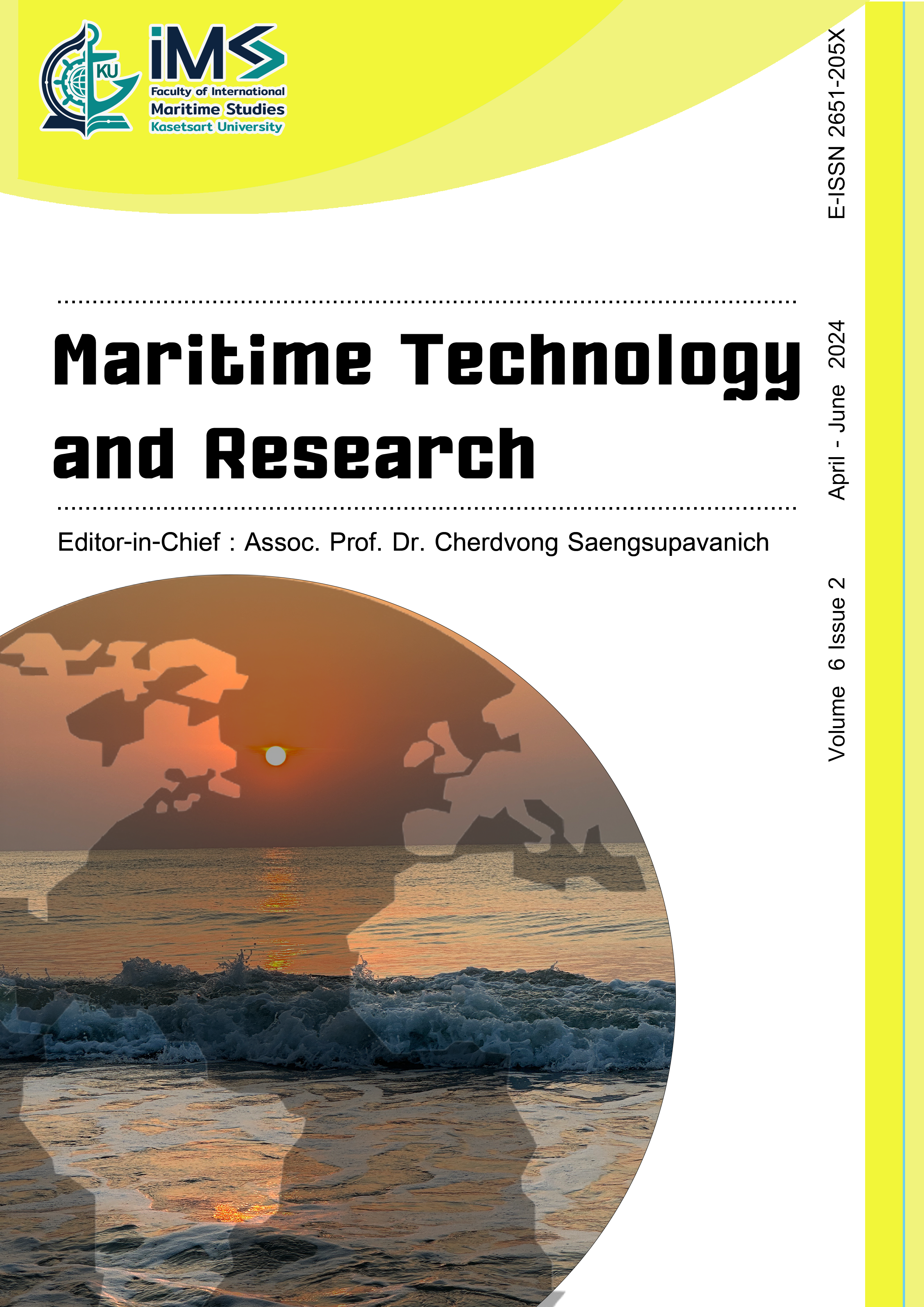Design of submarine pipeline inspection system based on ultrasound
DOI:
https://doi.org/10.33175/mtr.2024.268534Keywords:
Submarine pipeline inspection, Structure design, Non-destructive testing, UltrasoundAbstract
A design of a non-destructive testing system for underwater pipelines based on ultrasound has been proposed, consisting of a three-axis control system and an ultrasonic thickness measurement system. This can achieve full coverage testing and real-time data transmission of pipeline wall thickness through integrated composite rotating mechanisms, travel driving mechanisms, pipeline surface preprocessing mechanisms, data acquisition systems, etc., with high automation and the ability to achieve pipeline based testing. Among them, the pipeline surface pretreatment mechanism includes a polishing mechanism and a circulating immersion system, which are used to improve the coupling effect between the pipeline wall and the ultrasonic probe. This non-destructive testing system can achieve high detection efficiency and testing accuracy, effectively solving the current problems of undersea pipeline leakage and inaccurate positioning of corrosion damage. At present, the problem of global and efficient scanning still needs to be solved, as otherwise it will be difficult to further improve work efficiency.
------------------------------------------------------------------------------
Cite this article: Bingbing, D., Sen, Z., Yuemin, Y. (2024). Design of submarine pipeline inspection system based on ultrasound. Maritime Technology and Research, 6(2), 268534. https://doi.org/10.33175/mtr.2024.268534
------------------------------------------------------------------------------
Highlights
- A design of a non-destructive testing system for underwater pipelines based on ultrasound has been proposed, consisting of a three-axis control system and an ultrasonic thickness measurement system
- The system can realize scanning detection with high efficiency and automation
- The system is equipped with an automatic coupling mechanism to ensure the stability and reliability of the work
References
Aleshin, N. P., Mogilner, Y. L., Krysko, N. V., Pridein, O. A., Idrisov, M. T., & Kusyy, A. G. (2022). Possibilities for testing welded joints of the walls of steel tanks using ultrasonic and eddy current methods. Russian Journal of Nondestructive Testing, 58, 657-665. https://doi.org/10.1134/S1061830922080022
Ang, B., Habibi, R., Kett, C., Chin, W. H., Barr, J. J., Tuck, K. L., Neild, A., & Cadarso, V. J. (2023). Bacterial concentration and detection using an ultrasonic nanosieve within a microfluidic device. Sensors and Actuators B: Chemical, 374, 132769. https://doi.org/10.1016/J.SNB.2022.132769
Kim, D., Kim, R., Min, J., & Choi, H. (2023). Initial freeze-thaw damage detection in concrete using two-dimensional non-contact ultrasonic sensors. Construction and Building Materials, 364, 129854. https://doi.org/10.1016/J.CONBUILDMAT.2022.129854
Miyamoto, R., Doi, T., Mizutani, K., Wakatsuki, N., Ebihara, T., & Akiyama, S. (2023). Detection of fish passing through a narrow path using reflected and transmitted ultrasonic waves. Japanese Journal of Applied Physics, 62, SJ1047. https://doi.org/10.35848/1347-4065/ACC4CE
Rabe, U., Pudovikov, S., Herrmann, H. G., Wiggenhauser, H., Prabhakara, P., & Niederleithinger, E. (2023). Using the corner reflection for depth evaluation of surface breaking cracks in concrete by ultrasound. Journal of Nondestructive Evaluation, 42, 44. https://doi.org/10.1007/s10921-023-00956-8
Downloads
Published
License
Copyright (c) 2024 Maritime Technology and Research

This work is licensed under a Creative Commons Attribution-NonCommercial-NoDerivatives 4.0 International License.
Copyright: CC BY-NC-ND 4.0








